Biochemical tests for Staphylococcus aureus

Biochemical tests are actually those tests that are used for the identification of species of bacteria. These tests identify bacterial species on the basis of their biochemical activities. Here, you are going to learn different Biochemical tests for Staphylococcus aureus
Table of Contents
Biochemical tests for Staphylococcus aureus:
There is numerous biochemical test that we use to confirm staphylococcus auras. Some of them are;
1- Coagulase test:
Principle:
This biochemical test distinguishes positive S. auras from negative coagulase staphylococcus. Coagulase is basically an enzyme that is produced by staphylococcus aureus that transforms fibrinogen which is present in plasma into fibrin. This is one of the most important Biochemical tests for Staphylococcus aureus
Procedure:
- Firstly, we have to emulsify a colony of Staphylococcus in a water drop on a grease-free and clean slide along with minimum spreading.
- Then make likely suspension of negative and positive strains to confirm suitable plasma reactivity.
- Incline a flamed and cooled wire into pure plasma then withdraw and mix adhering traces of plasma into staphylococcal suspension on the slide.
- If clumping appears, then the test is positive otherwise negative.

Observation:
A clumping of cocci visible to the naked eye starts to appear.
Result:
It indicates the presence of staphylococcus aureus.
2- Catalase test:
Principle:
This biochemical test is used to regulate whether gram + cocci is staphylococci or streptococci. Catalase is an enzyme that transforms HO into H2O and O. This is also one of the most important Biochemical tests for Staphylococcus aureus
Procedure:
- At first, bacteria are gently mixed with hydrogen peroxide
- Because of the production of oxygen, if a bubble seems to appear, the test is positive.
- On the other hand, if no bubble appears, the test is negative or it is said to be catalase-negative.
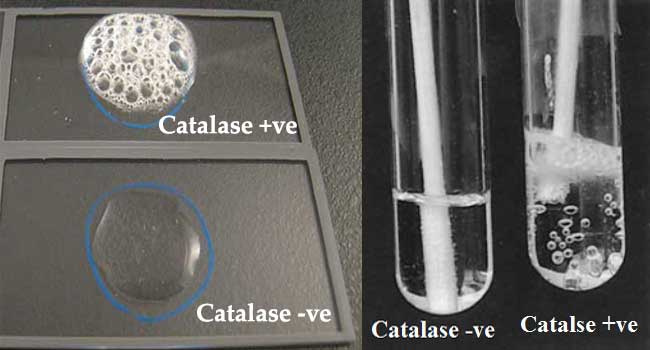
Observation:
After mixing, the bubble was seeming to appear.
Result:
It means that gram-positive cocci are staphylococcus.
3- Indole production test:
Principle:
The indole production test is a biochemical test that is used to determine the capability of specific bacteria to decay amino acid to indole which gathers in the medium. Indole is produced by reductive deamination from tryptophan through indole pyruvic acid.
Procedure:
- First, you have to take sterilized test tubes having 4 milliliters of tryptophan broth.
- Then aseptically inoculate the tube by taking growth from eighteen to twenty-four hours culture.
- Set at incubation at 37 degrees centigrade for 24-28 hours.
- Then add 1/2ml of Kovac’s reagent to the broth culture and see the presence or absence of the ring.
Observation:
The ring starts to appear.
Result:
It indicates the presence of staphylococcus aureus.
4- Methyl red test:
Principle:
We use this biochemical test to determine if the bacteria has the ability to employ glucose along with the creation of stable acid then the color of the methyl orange turns from yellow to red when added to the broth culture.
Procedure:
- First, let the medium equilibrate to room temp. before inoculation
- Then lightly inoculate the medium by using organisms that were taken from 118-24 hrs. pure culture and aerobically incubate at 37 degrees centigrade.
- After incubation, place 1ml of broth to clean the test tube and incubate again the remaining broth for 24 hrs.
- Then add 1-2 drops of methyl red indicator to the test tube containing broth.
- Then observe the changes in color
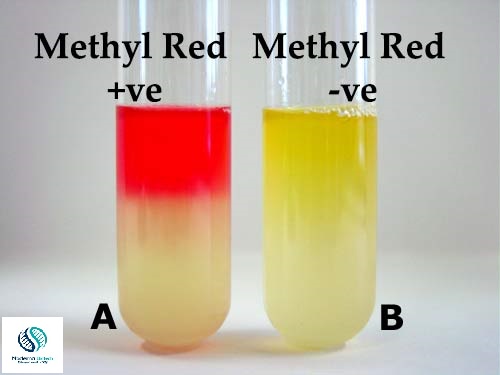
Observation:
The orange color of the methyl indicator starts changing from yellow to red.
Result:
The red color signifies a positive test and indicates the presence of staphylococcus aureus.
5- Citrate test:
Principle:
This test is performed to determine the capability of organisms to employ citrate as the only carbon source.
Procedure:
- First, by touching the tip of a needle for 24 hrs. old colony, inoculate Simmons citrate agar lightly on a slant, and then incubate it at 37 degrees centigrade.
- Then after incubation, observe the changes in color.
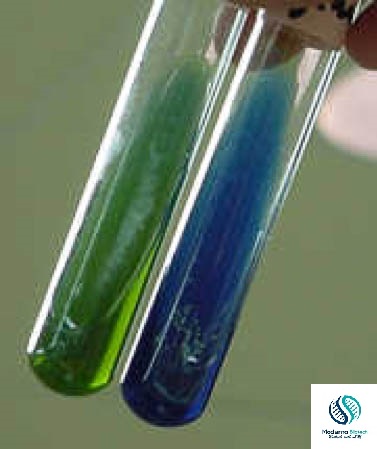
Observation:
The intense Prussian blue color starts to develop.
Result:
This indicates the presence of s. aureus.
6- Gram staining test:
Principle:
We use this biochemical test to determine the capability of the bacterial cell wall to retain crystal violet dye all through solvent treatment. The cell wall of gram-negative bacteria has lower peptidoglycan and higher lipid content than gram-positive bacteria. The cell wall of bacteria is stained by crystal violet.
Procedure:
- Firstly, you have to make a slide of the cell sample to be stained and then heat fix it through the Bunsen burner 3 times.
- The second step is to add a primary stain to the slide and incubate it for 1 min.
- After rinsing the slide with a gentle stream of water, add mordant as gram’s iodine for 1 min.
- Then again rinse the slide with alcohol for 3s and wash with a gentle stream of water. If the sample is gram-positive then alcohol decolorizes the sample
- After adding a secondary stain (safranin), incubate the sample for 1 min and wash again with water for 5s.
- If a bacterium is gram-negative, it will lose the primary stain and change into a secondary stain causing it to appear red when observing under a microscope.

Observation:
It is observed that bacteria will not lose their primary stain.
Result:
It means it’s a gram-positive staphylococcus bacterium.
7- Oxidase test:
Principle:
The oxidase test works on the principle that few bacteria form indophenol blue from the oxidation of dimethyl-p-phenylenediamine and alpha naphthol. Cytochrome oxidase, the N-dimethyl-p-phenylenediamine oxalate, and alpha naphthol react to indophenol blue.
Procedure:
- First, take a filter paper that is saturated with substrate tetramethyl-p-phenylenediamine dihydrochloride and moisten it with sterile water.
- Then with a wooden loop, pick the colony which is to be tested and smear it in filter paper and observe the color change of the inoculated area of the paper
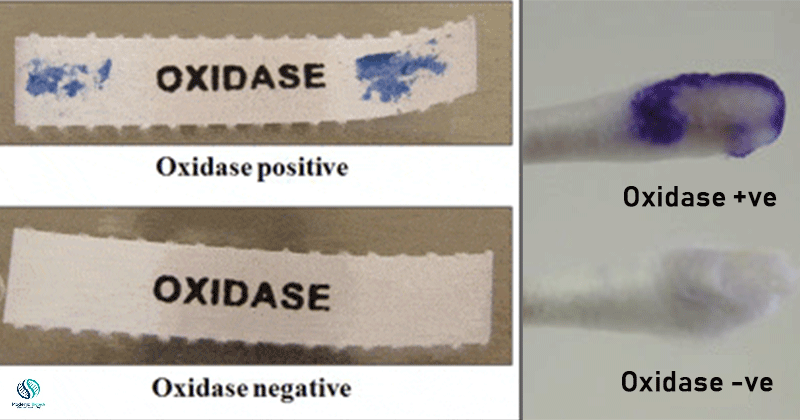
Observation:
Deep blue color starts to appear within 10-20s.
Result:
It signifies a positive test and indicates the presence of S. aureus.
8- Nitrate reduction test:
Principle:
We use this biochemical test to detect nitrite and determine its ability to produce a red compound after reaction with sulfanilic acid to make a complex that further reacts with alpha naphthylamine to produce a red precipitate.
Procedure:
- In the first step, there is the inoculation of nitrate broth with the suspension of bacteria.
- Then tubes are incubated at 37 degrees centigrade for 24 hrs.
- Before adding reagent, we will look for nitrogen gas to produce.
- Then we will add 6-8 drops of nitrite reagent A&B and observe the color change.
- We will add zinc powder if no color develops.
Observation:
We will observe that the cherry red color starts to develop.
Result:
It indicates the presence of staphylococcus aureus.
9- Urease test:
Principle:
We use this test for the identification of those bacteria that has the ability to hydrolyze urea to generate carbon dioxide and ammonia.
Procedure:
- At first, we will streak urea agar slant surface with part of the well-isolated colony.
- Then incubate it at 35-37 degrees centigrade for 48 hrs. to seven days.
- Then we will examine the color change for as long as seven days.
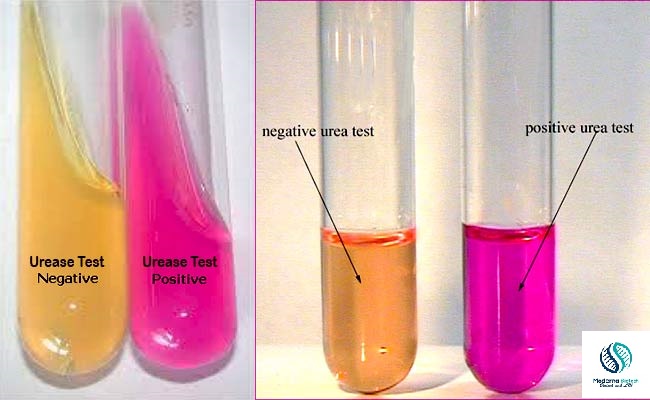
Observation:
We will notice that within seven days, the pink color starts to develop.
Result:
It indicates the presence of S. aureus.
10- Voges Proskauer test:
Principle:
We use this test to determine the ability of organisms to produce acetyl methyl carbinol from the fermentation of glucose.
Procedure:
- Before inoculation, let the medium equilibrate at room temperature.
- Then lightly inoculate the medium by using an organism taken from pure culture and aerobically incubate at 37 degrees centigrade.
- After incubation, place 2ml broth to clean the test tube and reintubate the remaining broth.
- Then add six drops of 5% alpha-naphthalol and gently mix to aerate.
- After adding two drops of 40% KOH and again mix to aerate.
- Then shake vigorously and observe the development of pink color.
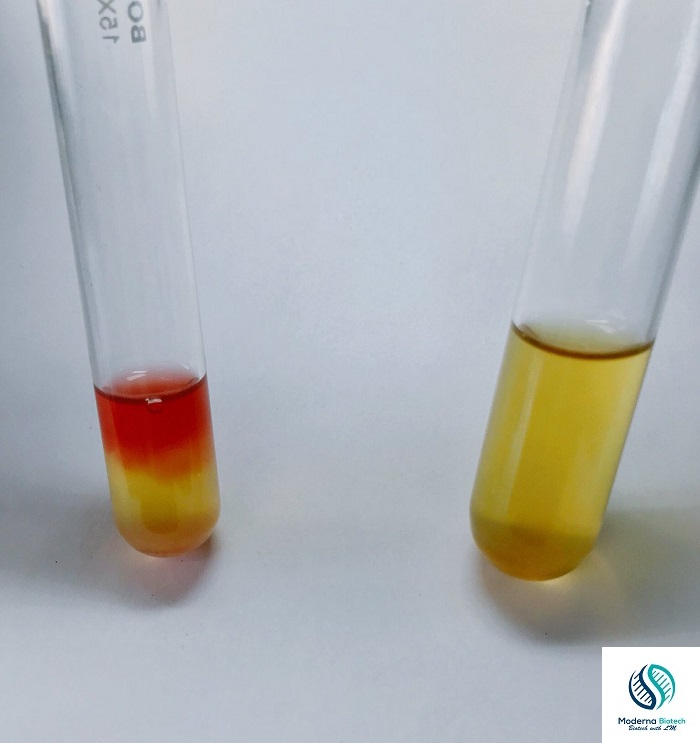
Observation:
The pink color starts to develop.
Result:
The pink-red color at the surface indicates the presence of s. aureus.
See also How does PCR works?
Cmovies Free movies – Your Personal Theater for Unlimited Streaming

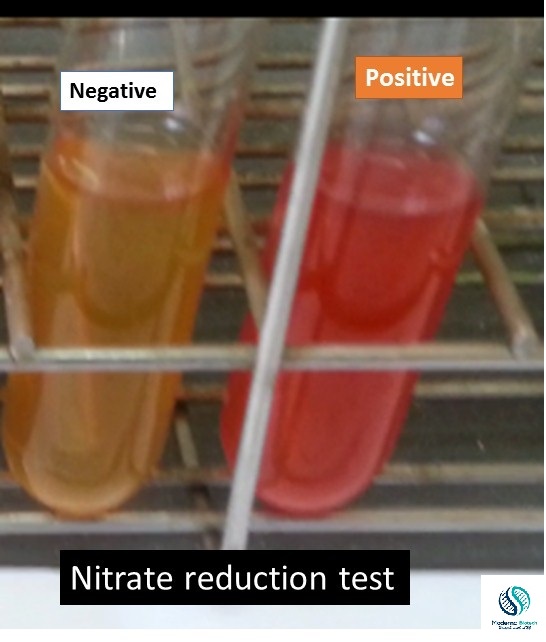



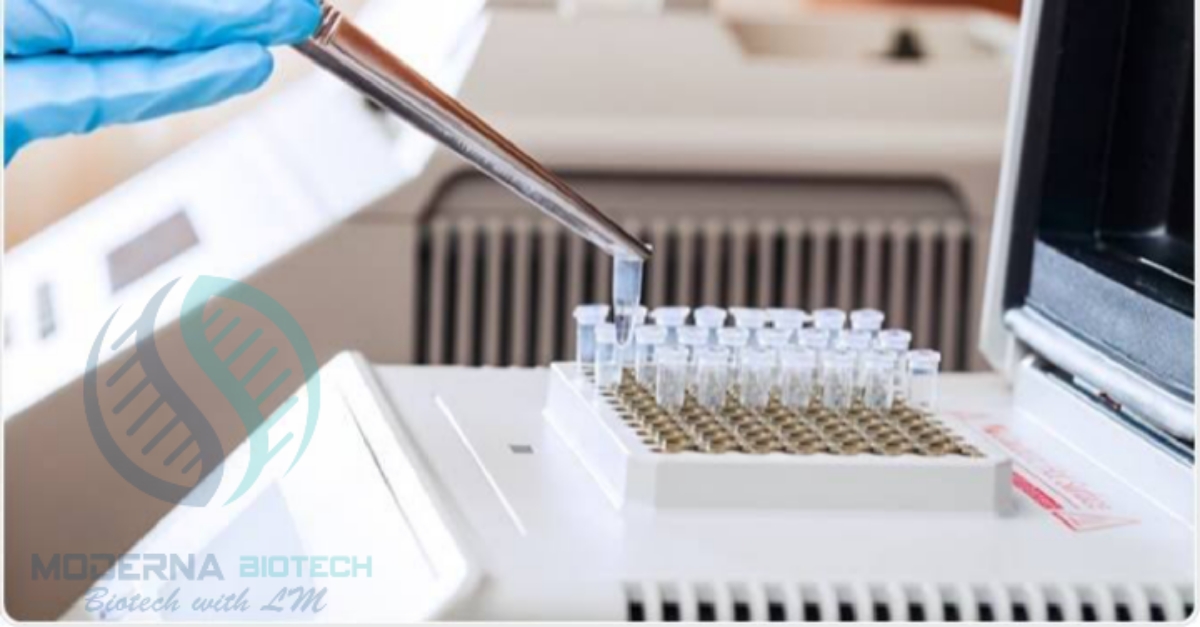
Aided me a lot, just what I was looking for : D.
We are glad to hear it 🙂
I enjoy you because of all your valuable hard work on this blog. Ellie takes pleasure in setting aside time for investigations and it’s really obvious why. A lot of people hear all regarding the powerful medium you convey worthwhile techniques on the website and as well as cause participation from people about this subject while our favorite princess is without question studying a lot. Enjoy the remaining portion of the new year. You have been conducting a first-class job.
Normally I do not read articles on blogs, but I wish to say that this write-up very forced me to try and do it! Your writing style has been surprised me. Thanks, very nice post.
Thank you for giving this information. Finally i found what i was looking for
hello!, I like your writing so much! share we communicate more approximately your post on AOL? I require a specialist in this space to resolve my problem. Maybe that’s you! Having a look forward to see you.
Hi, please let us know
Thank you so much for your valuable feedback 🙂
Thank you so much for your appreciation
Thank you so much for your words of encouragement
I have observed that online degree is getting preferred because attaining your degree online has changed into a popular choice for many people. Numerous people have definitely not had a chance to attend a traditional college or university nonetheless seek the increased earning possibilities and career advancement that a Bachelor Degree offers. Still other individuals might have a degree in one course but want to pursue some thing they already have an interest in.
When I initially commented I clicked the -Notify me when new comments are added- checkbox and now every time a comment is added I get 4 emails with the same comment. Is there any manner you can remove me from that service? Thanks!
Sorry, we can’t help you with this
Thanks for your tips about this blog. A single thing I wish to say is the fact purchasing electronics items through the Internet is not new. In fact, in the past several years alone, the market for online electronics has grown noticeably. Today, you will discover practically just about any electronic unit and tools on the Internet, which include cameras plus camcorders to computer pieces and video games consoles.
I don抰 even know how I finished up right here, however I assumed this publish used to be good. I don’t recognise who you’re but certainly you’re going to a famous blogger when you aren’t already 😉 Cheers!
This page truly has all of the info I wanted concerning this subject and didn’t know who to ask.
Just wish to say your article is as astonishing. The clarity for your publish is simply nice and that i could think you are a professional on this subject. Fine together with your permission allow me to take hold of your RSS feed to keep updated with impending post. Thanks a million and please keep up the rewarding work.
I discovered your blog web site on google and verify a couple of of your early posts. Continue to maintain up the excellent operate. I just extra up your RSS feed to my MSN News Reader. In search of forward to reading extra from you in a while!?
Hey there are using WordPress for your site platform? I’m new to the blog world but I’m trying to get started and create my own. Do you require any coding expertise to make your own blog? Any help would be really appreciated!
Spot on with this write-up, I really think this web site needs way more consideration. I抣l probably be again to learn way more, thanks for that info.
I抦 not that much of a online reader to be honest but your sites really nice, keep it up! I’ll go ahead and bookmark your website to come back down the road. Many thanks
Awesome blog! Do you have any tips and hints for aspiring writers? I’m planning to start my own blog soon but I’m a little lost on everything. Would you recommend starting with a free platform like WordPress or go for a paid option? There are so many options out there that I’m completely overwhelmed .. Any ideas? Cheers!
I do trust all the ideas you’ve presented on your post. They’re very convincing and will certainly work. Still, the posts are very brief for starters. Could you please lengthen them a bit from next time? Thanks for the post.
After going over a few of the blog articles on your blog,
I honestly like your technique of writing a blog. I saved it to my bookmark site list
and will be checking back soon. Please check out my web site too and let me know
your opinion.
After study just a few of the blog posts in your web site now, and I actually like your way of blogging. I bookmarked it to my bookmark website list and shall be checking back soon. Pls take a look at my website online as well and let me know what you think.
Its like you read my mind! You seem to know so much about this, like you wrote the book in it or something. I think that you could do with a few pics to drive the message home a bit, but other than that, this is magnificent blog. A fantastic read. I’ll certainly be back.
Thanks for the good writeup. It in reality was a enjoyment account it. Glance advanced to far brought agreeable from you! By the way, how can we be in contact?
contact us through [email protected]
Best view i have ever seen !
I will right away grasp your rss feed as I can’t to find your email subscription hyperlink or newsletter service. Do you’ve any? Please let me know so that I may subscribe. Thanks.
Best view i have ever seen !
Good day! I know this is kinda off topic but I’d figured I’d ask.
Would you be interested in trading links or maybe guest writing a blog post or vice-versa?
My blog addresses a lot of the same subjects as yours
and I think we could greatly benefit from each other.
If you are interested feel free to shoot me an email.
I look forward to hearing from you! Superb blog by the way!
I have read so many posts about the blogger lovers but this post is truly a
pleasant paragraph, keep it up.
Attractive section of content. I just stumbled upon your web site and in accession capital to assert that I acquire actually enjoyed account your blog posts. Any way I will be subscribing to your augment and even I achievement you access consistently rapidly.
in eadtern michigan, what stores are selling cbd oil?
informacion del anime del evento flower and alice
Has anyone visited Pure Smoke? 🙂
noticias la demanda del departamento de justicia dice que la ley de boletas de texas perjudica a quienes necesitan ayuda con las boletas buscan boletas por correo
tutoriales alpine js el marco de javascript que se usa como jquery escrito como vue e inspirado en tailwindcss trucos css
Has anyone ever been to Avail Vapor Ecig Shop located in 327 N 78th Street?
excelente contenido de video para ayudar a los ninos a entender la educacion sexual